Answered step by step
Verified Expert Solution
Question
1 Approved Answer
Java. Tips on how to get started when programming these projects would be great. Deliverables Your project files should be submitted to Web-CAT by the
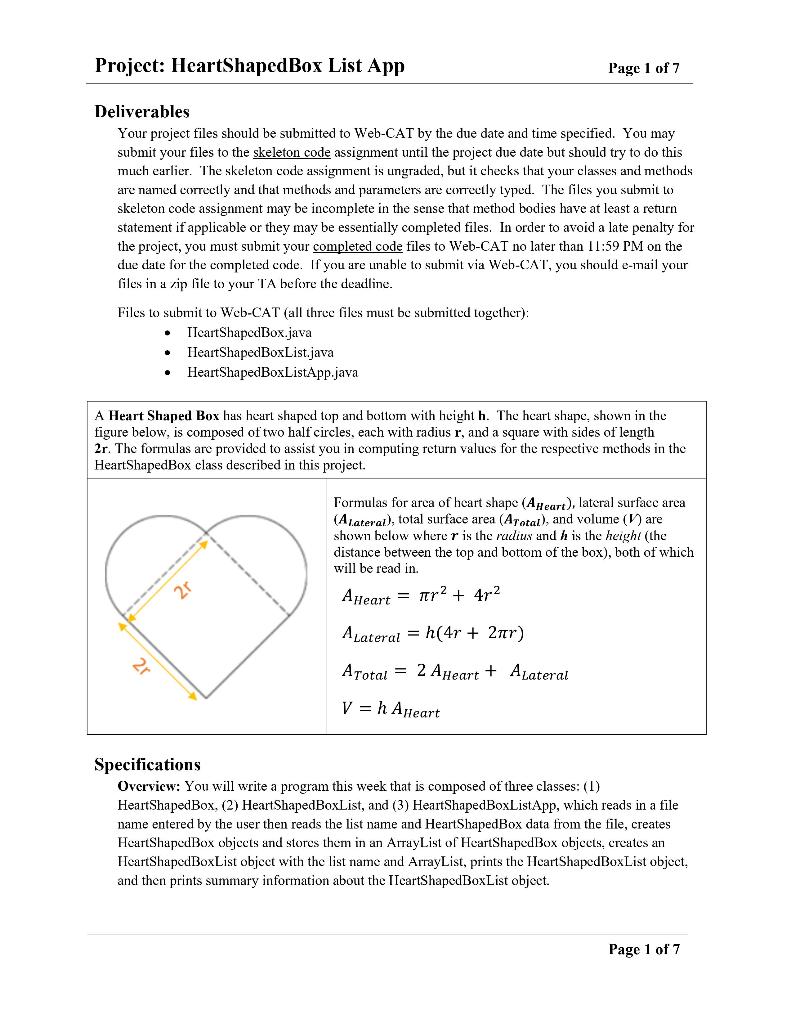
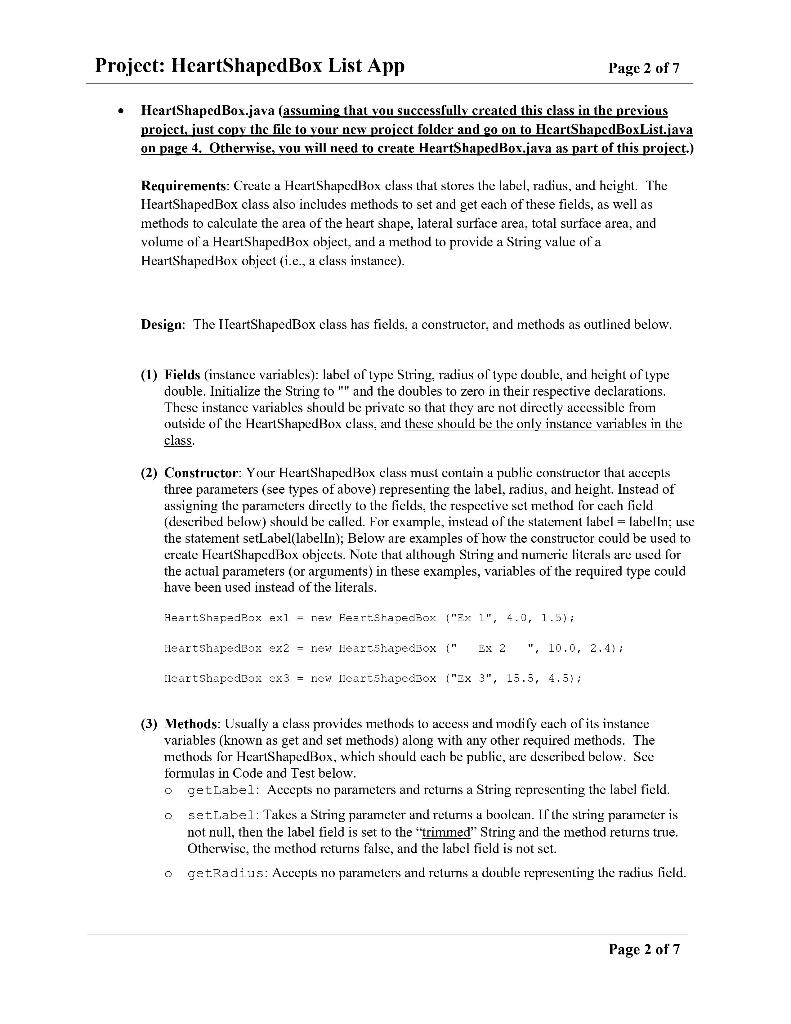
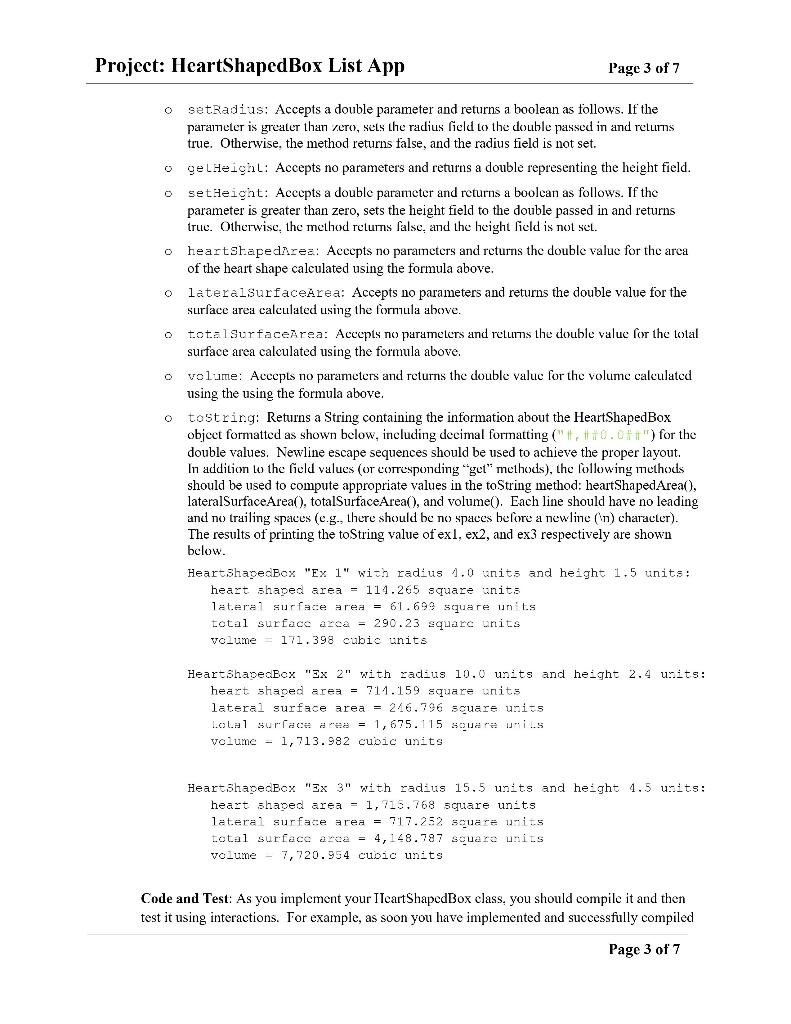
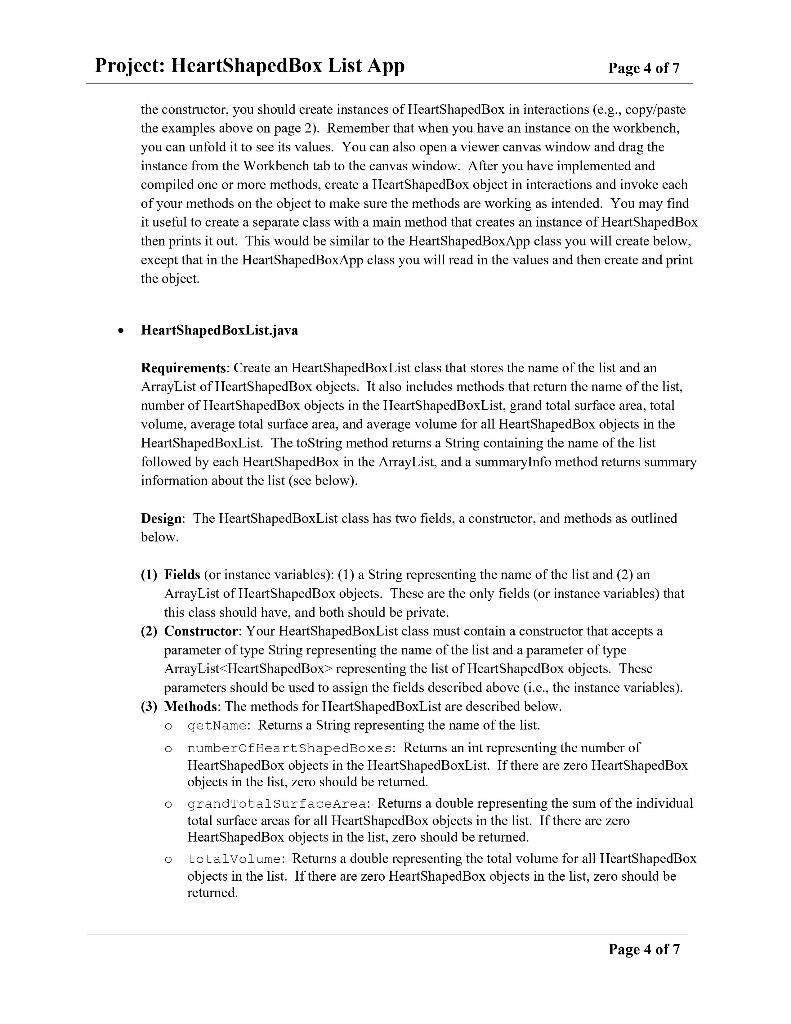
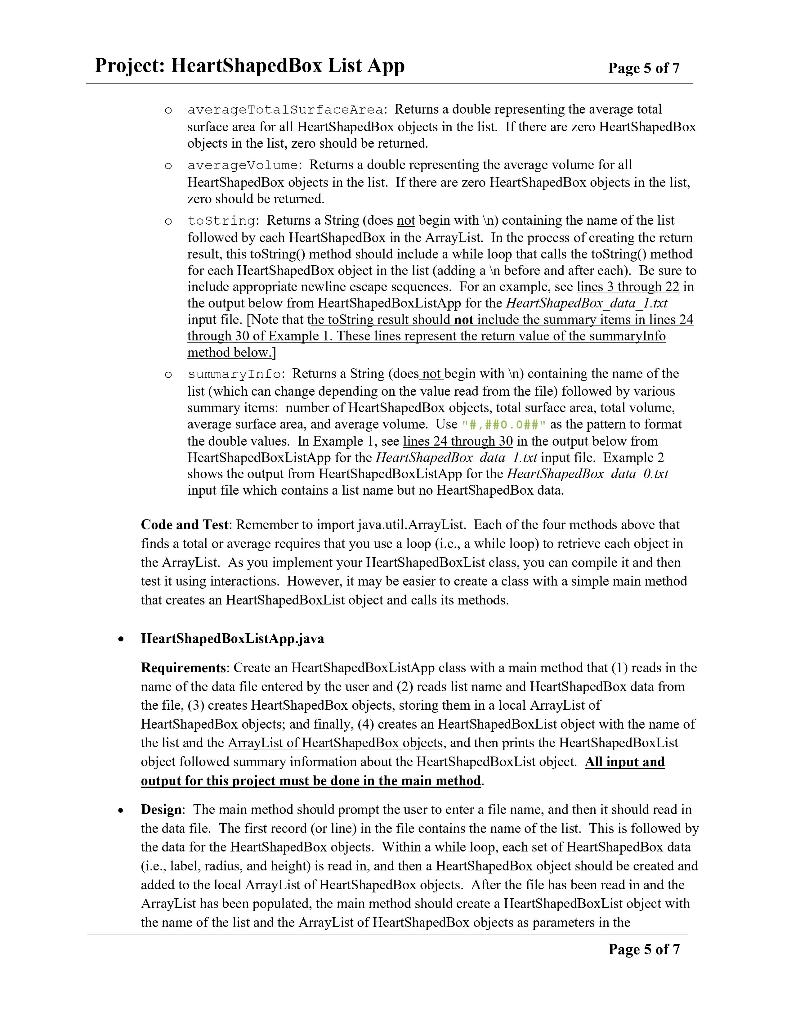
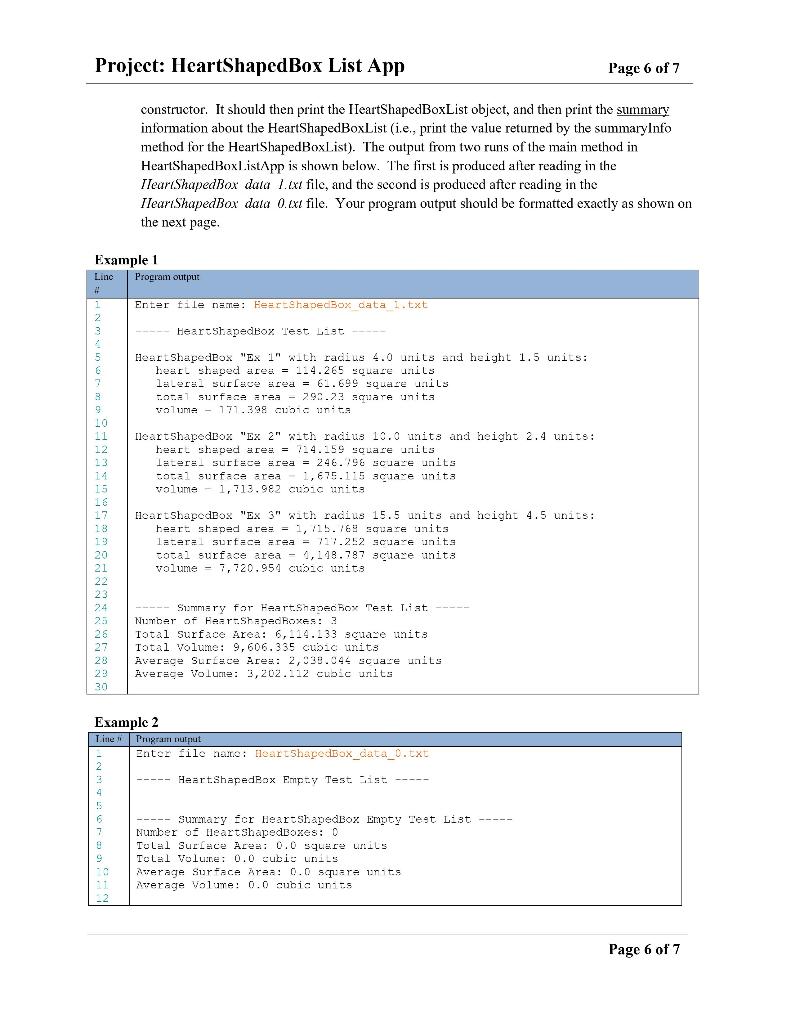


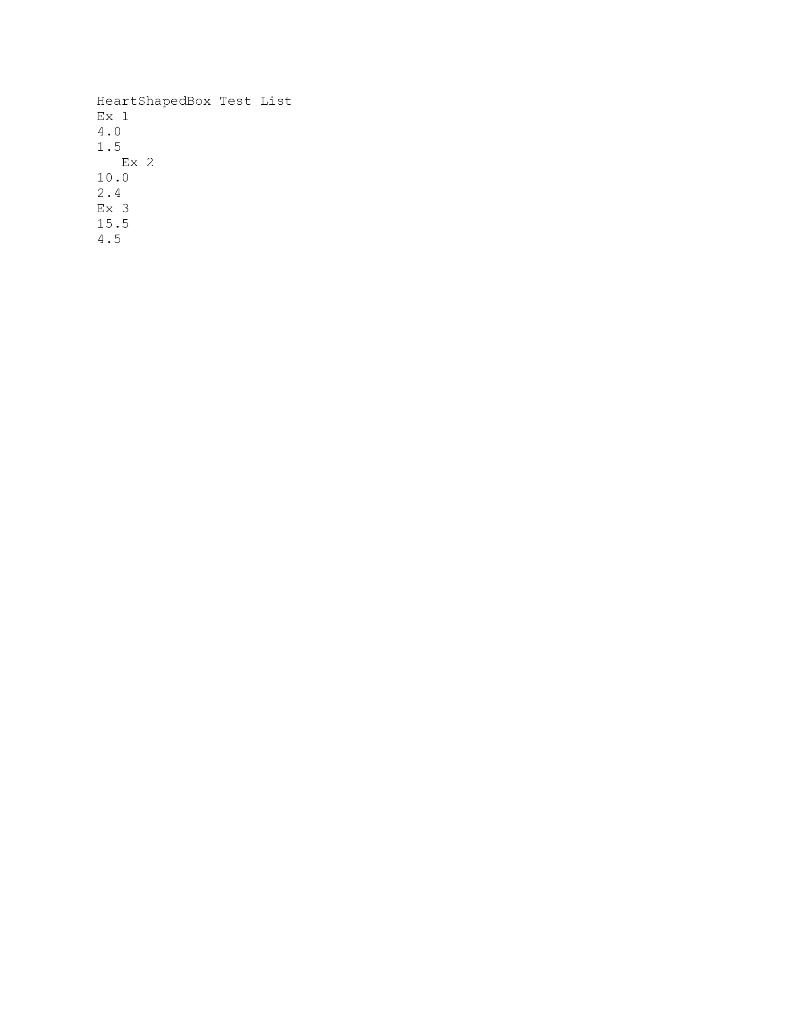
Java. Tips on how to get started when programming these projects would be great.
Deliverables Your project files should be submitted to Web-CAT by the due date and time specified. You may submit your files to the skeleton code assignment until the project due date but should try to do this much earlier. The skeleton code assignment is ungraded, but it checks that your classes and methods are named correetly and that methods and parameters are coneetly typed. The files you submit to skeleton code assignment may be incomplete in the sense that method bodies have at least a return statement if applicable or they may be essentially completed files. In order to avoid a late penalty for the project, you must submit your completed code files to Web-CAT no later than 11:59PM on the due date for the completed code. If you are unable to submit via Web-CAT, you should e-mail your files in a rip tile to your TA before the deadline. Files to submit to Web-CAT (all three files must be submitted together): - IIcartShapedBox.java - HeartShapedBoxList.java - HeartShapedBoxListApp.java A Heart Shaped Box has heart shaped top and bottom with height h. The heart shape, shown in the figure below, is composed of two half circles, each with radius r, and a square with sides of length 2r. The formulas are provided to assist you in computing return values for the respective methods in the HeartShapedBox class described in this project. Formulas for area of heart shape ( AHeart), lateral surface area (Alatera), total surface area (ATotal), and volume (V) are shown below where r is the radius and h is the height (the distance between the top and bottom of the box), both of which will be read in. AHeart=r2+4r2ALateral=h(4r+2r)ATotal=2AHeart+ALateralV=hAHeart Specifications Overview: You will write a program this week that is composed of three classes: (1) HeartShapedBox, (2) HeartShapedBoxList, and (3) HeartShapedBoxListApp, which reads in a file name entered by the user then reads the list name and HeartShapedBox data from the file, creates HeartShapedBox objects and stores them in an ArrayList of HeartShapedBox objects, creates an HeartShapedBoxList objeet with the list name and ArrayList, prints the HeartShapedBoxList object, and then prints summary information about the IIeartShapedBoxList object. oject: HeartShapedBox List App Page 2 of 7 - HeartShapedBox.java (assuming that rou successfully created this class in the previous projcct, just copy the filc to vour new projcct folder and go on to HcartShapcdBoxList.java on page 4. Otherwise, vou will need to create HeartShapedBox. java as part of this project.) Requirements: Create a HeartShapedBox class that stores the label, radius, and height. The HeartShapedBox class also includes methods to set and get each of these fields, as well as methods to calculate the area of the heart shape, lateral surface area, total surface area, and volume of a HeartShapedBox object, and a method to provide a String value of a HeartShapedBox object (i.e., a class instance). Design: The IIeartShapedBox class has fields, a constructor, and methods as outlined below. (1) Fields (instance variables): label of type String. radius of type double, and height of type double. Initialize the String to "" and the doubles to zero in their respective declarations. These instance variables should be private so that they are not directly aceessible from outside of the Hear1ShapedBox class, and these should be the only instance variables in the class. (2) Constructor: Your HeartShapedBox class must contain a public consiructor that aceepts three parameters (see types of above) representing the label, radius, and height. Instead of assigning the parameters directly to the fields, the respective set method for cach field (described below) should be called. For example, instead of the statement label = labelnn; use the statement setLabel(labelIn); Below are examples of how the constructor could be used to create HeartShapedBox objects. Note that although String and numerie literals are used for the actual parameters (or arguments) in these examples, variables of the required type could have been used instead of the literals. HeartShapedBox ex1 = new FeartshapedBox ("x 1", 4.0, 1.5); neartshapedbon ex2 = nen heartshapedBox (" Ex 2 ", 10,0,2.43; (3) Vethods: Usually a class provides methods to aceess and modify each of its instance variables (known as get and set methods) along with any other required methods. The methods for HearlShapedBox, which should each be public, are described below. See formulas in Code and Test below. - getLabel: Accepts no parameters and returns a String representing the label field. - setcabel: Takes a String parameter and retums a boolean. If the string parameter is not null, then the label field is set to the "trimmed" String and the method returns true. Otherwisc, the method returns false, and the label field is not set. - getRadius: Aecepts no parameters and returns a double representing the radius field. Page 3 of 7 - setRadius: Accepts a double parameter and returns a boolean as follows. If the parameter is greater than zero, sets the radius field to the double passed in and returns true. Otherwise, the method returns false, and the radius field is not set. geLAe ighL: Accepts no parameters and returns a double representing the height field. - setheight: Aceepts a double parameter and returns a boolean as follows. If the parameter is greater than zero, sets the height field to the double passed in and returns true. Otherwise, the method returns false, and the height field is not set. - heartslapednrea: Aeecpts no parameters and returns the double value for the area of the heart shape calculated using the formula above. - Iateralsurfacenrea: Accepts no parameters and returns the double value for the surface area calculated using the formula above. - totalsurfacenrea: Accepts no parameters and retums the double value for the total surface area calculated using the formula above. - Volume: Aceepts no parameters and returns the double value for the volume caleulated using the using the formula above. tostring: Returns a String containing the information about the HeartShapedBox object formatted as shown below, including decimal formatting (" ,0.0 ) for the double values. Newline escape sequences should be used to achieve the proper layout. In addition to the field values (or eorresponding "get" methods), the lollowing methods should be used to compute appropriate values in the toString method: heartShapedAreaO, lateralSurfaceArea(), totalSurfaceArea(), and volume(). Each line should have no leading and no trailing spaces (e.g., there should be no spaces belore a newline (n) character). The results of printing the toString value of ex1, ex2, and ex3 respectively are shown bclow. HeartshapedBox "Ex 1 " with radius 1.0 units and height 1.5 units: heart shaped area =114.265 square units 1 ateral surface area =61.699 square units total surface arca =290.23 square units volume =171.398 cubic units heart shaped area =711.159 square units lateral surface area =246.796 scuare units velume - 1,713.982 cuoic units HeartshapedBox "x3n with radius 15.5 units and height 4.5 units: heart shaped area =1,715.768 square units lateral surface area =717.252 seuare umits total surface area =4,148.787 senare units volume - 7,720.954 cuoic units Code and Test: As you implement your IIeartShapedBox class, you should compile it and then est it using interactions. For example, as soon you have implemented and successfully compiled Page 3 of 7 roject: HeartShapedBox List App Page 4 of 7 the constructor, you should create instances of HeartShapedBox in interactions (e.g., copy/paste the examples above on page 2). Remember that when you have an instance on the workbench, you can unfold it to see its values. You can also open a viewer canvas window and drag the instance from the Workbench tab to the canvas window. After you have implemented and compiled one or more methods, create a IIcartShapedBox object in interactions and invoke each of your methods on the object to make sure the methods are working as intended. You may find it useful to create a separate class with a main method that creates an instance of HeartShapedBox then prints it out. This would be similar to the HeartShapedBox App class you will create below, except that in the HeartShapedBox pp class you will read in the values and then create and print the objeet. - HeartShapedBoxlist.java Requirements: Create an HeartShapedBoxl ist class that stores the name of the list and an ArrayList of I IeartShapedBox objects. It also includes methods that return the name of the list, number of IIeartShapedBox objects in the IIeartShapedBoxList, grand total surface area, total volume, average total surface area, and average volume for all HeartShapedBox objects in the HeartShapedBoxList. The toString method returns a String containing the name of the list followed by each HeartShapedBox in the ArrayL ist, and a summaryInfo method returns summany information about the list (see below). Design: The HeartShapedBoxList class has two fields, a constructor, and methods as outlined below. (1) Fields (or instance variables): (1) a String representing the name of the list and (2) an ArrayList of IIeartShapedBox objects. These are the only fields (or instanee variables) that this class should have, and both should be private. (2) Constructor: Your HeartShapedBoxList class must contain a constructor that accepts a parameter of type String representing the name of the list and a parameter of type ArrayList HeartShapedBox representing the list of HcartShapedBox objects. Thesc parameters should be used to assign the fields described above (i.e., the instance variables). (3) Methods: The methods for IIeartShapedBoxList are described below. - Getivame: Returns a String representing the name of the list. - numbercfHeartshapedBoxes: Returns an int representing the number of HeartShapedBox objects in the HeartShapedBoxList. If there are zero HeartShapedBox objects in the list, zero should be retumed. - grandlotalsurfacearea: Returns a double representing the sum of the individual total surface areas for all HeartShapedBox objcets in the list. If there are zero HeartShapedBox objects in the list, zero should be returned. - Lotalvolume: Returns a double representing the total volume for all IIeartShapedBox objects in the list. If there are zero HeartShapedBox objects in the list, zero should be returned. Page 4 of 7 oject: HeartShapedBox List App Page 5 of 7 - averageTotaisurface area: Returns a double representing the average total surface area for all HearlShapedBox objects in the list. If there are aero HeartShapedBox objects in the list, zero should be returned. - averagevolume: Returns a double representing the average volume for all HeartShapedBox objects in the list. If there are zero HeartShapedBox objects in the list, zero should be retumed. - tostring: Returns a String (does not begin with n ) containing the name of the list followed by cach IIeartShapedBox in the ArrayList. In the process of creating the return result, this toString() method should include a while loop that calls the toString() method for each IIeartShapedBox object in the list (adding a in before and after each). Be sure to include appropriate newline cscape sequences. For an example, see lines 3 through 22 in the output below from HeartShapedBoxList App for the HeartShapedBor_data_I.txt input file. [Note that the toString result should not include the summary items in lines 24 through 30 of Example 1 . These lines represent the return value of the summary tn to method below.] - sumtury InIo: Returns a String (does not begin with in) containing the name of the list (which can change depending on the value read from the file) followed by various summary items: number of HeartShapedBox objects, total surface arca, total volume, average surface area, and average volume. Use "\#, \#\#O. D\#\#" as the pattern to format the double values. In Example 1, see lines 24 through 30 in the output below from HeartShapedBoxListApp for the HearIShapedBox data 1.0x input file. Example 2 shows the outpul from HearlShapedBoxListApp for the HearlShapedBox dala 0. ext input tile which contains a list name but no HeartShapedBox data. Code and Test: Remember to import java.util.ArrayList. Each of the four methods above that finds a total or average requires that you use a loop (i.c., a while loop) to retricve each object in the ArrayList. As you implement your IIeartShapedBoxList class, you can compile it and then test it using interactions. However, it may be easier to create a class with a simple main method that creates an HeartShapedBoxList object and calls its methods. - IIeartShapedBoxListApp.java Requirements: Create an HeartShapedBoxListApp class with a main method that (1) reads in the name of the data file entered by the user and (2) reads list name and IleartShapedBox data from the file, (3) creates HeartShapedBox objects, storing them in a local ArrayList of HeartShapedBox objects; and finally, (4) creates an HeartShapedBoxList object with the name of the list and the ArayList of HeartShapedBox objeets, and then prints the HeartShapedBoxList object followed summary information about the HeartShapedBoxList object. All input and output for this project must be done in the main method. - Design: The main method should prompt the user to enter a file name, and then it should read in the data file. The first record (or line) in the file contains the name of the list. This is followed by the data for the HeartShapedBox objects. Within a while loop, each set of HeartShapedBox data (i.e., label, radius, and height) is read in, and then a HeartShapedBox object should be created and added to the loeal Arrayl ist of HeartShapedBox objects. After the file has been read in and the ArrayList has been populated, the main method should create a IIeartShapedBoxList object with the name of the list and the ArrayList of IleartShapedBox objects as parameters in the Page 5 of 7 Project: HeartShapedBox List App Page 6 of 7 constructor. It should then print the IleartShapedBoxList object, and then print the summary information about the HeartShapedBoxList (i.e,, print the value returned by the summaryInfo method for the HeartShapedBoxList). The output from two runs of the main method in HeartShapedBoxl ist pp is shown below. The first is produced after reading in the IIearlShapedBox data litat filc, and the second is produced after reading in the IIeariShapedBox data 0.xx file. Your program output should be formatted exactly as shown on the next page. Example 1 Example 2 ject: HeartShapedBox List App Page 7 of 7 Code: Remember to import java.util.ArrayList, java.util.Scanner, and java.io.File, and java.io.FileNotFoundexception prior to the class declaration. Your main method declaration should indicate that main throws FilcNotFoundexception. After your program reads in the file name from the keyboard, it should read in the data lile using a Scanner object that was created on a file using the file name entered by the user. ... - new Scanner(new File(fileName)); You can assume that the first line in the data file is the name of the list, and then each set of three lines contains the data from which an IIeartShapedBox object can be created. After the name of the list has been read and assigned to a local variable, a while loop should be used to read in the HeartShapedBox data. The boolean expression for the while loop should be as asvext (1) where the blank is the name of the Scanner you created on the file. Each iteration through the loop reads three lines. As each of the lines is read from the file, the respective local variables for the IleartShapedBox data items (label, radius, height) should be assigned, after which the HeartShapedBox object should be created and added to a local ArrayList of HeartShapedBox objects. The next iteration of the loop should then read the next set of three lines then create the next HeartShapedBox object and add it to the local Arraylist of HeartShapedBox objects, and so cm. After the file has been processed (i.e., when the loop terminates after the hasNext method returns false), name of the list and the ArrayList of HeartShapedBox objects should be used to create an HeartShapedBoxList object. Then the list should be printed by printing a leading in and the HeartShapedBoxList object. Finally, the summary information is printed by printing a leading in and the value returned by the summarylnfo method invoked on the HearlShapedBox .ist object. Test: You should test your program minimally (1) by reading in the HeariShapedBox data 1.xt input file, which should produce the first output above, and (2) by reading in the HeartShapedBox_data_o txt input file, which should produce the second output above. Although your program may not use all the methods in the HeartShapedBoxl ist and HeartShapedBox classes, you should ensure that all your methods work according to the specification. You can either user interactions in jGRASP or you can write another class and main method to exercise the methods. Web-CAT will test all methods to determine your project grade. General Notes 1. All input from the keyboard and all output to the screen should done in the main method. Only one Scanner object on System.in should be created and this should be done in the main method. All printing (i.e., using the System.out.print andior System.oul.println methods) should be in the main method. Hence, none of your methods in the HeartShapedBox and HeartShapedBoxList classes should do any input output (I/O). 2. Be sure to download the test data files (HeartShapedBox data l.t.t and IIearLShapedBox data 0.txt ) and store them in same folder as your source files. It may be useful examine the contents of the data files. Find the data files in the jGRASP Browse tab and then open each data file in jGRASP to see the items that your program will be reading from the file. Be sure to close the data files without changing them. Page 7 of 7 HeartshapedBox Empty Test Iist HeartshapedBox Test List Ex 1 4.0 1.5 Ex 2 10.0 2.4 Ex 3 15.5 4.5Step by Step Solution
There are 3 Steps involved in it
Step: 1

Get Instant Access to Expert-Tailored Solutions
See step-by-step solutions with expert insights and AI powered tools for academic success
Step: 2

Step: 3

Ace Your Homework with AI
Get the answers you need in no time with our AI-driven, step-by-step assistance
Get Started


